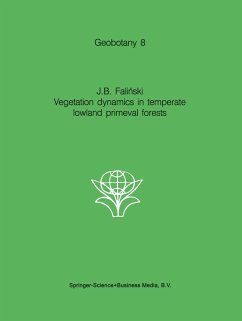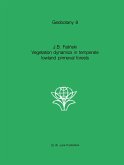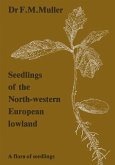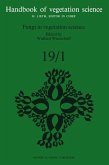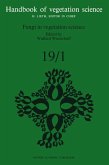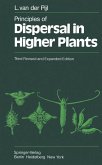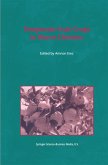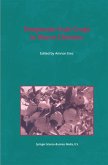I. Aim and Premisses.- I.1. Introduction, aim and subject.- I.2. Theoretical basis.- 2.1. Ecosystem theory and Bia?owie?a Forest studies.- 2.2. Vegetation dynamics as an ecological process.- I.3. Study area. Methodical basis. Material.- 3.1. Object.- 3.2. Organisation and methods.- 3.3. Nomenclature, abbreviations.- II. The Area ¿ Basic Data about Bia?owie?a Forest.- II. 1. General features.- 1.1. The vegetation.- 1.2. Topography.- 1.3. Physico-geographical situation.- II.2. Biogeography.- II.3. History.- II.4. Climate.- II.5. Geology.- II.6. Terrain formation and relief.- II.7. Hydrology.- III. Geobotany.- III.1. The flora.- 1.1. Statistics and general characteristic of the flora.- 1.2. Participation of trees, shrubs and undershrubs.- 1.3. Geographical characteristic of the flora.- 1.4. The flora of the Bia?owie?a Forest against the background of that of the adjacent areas.- III.2. Forest building trees and tree stands.- 2.1. Habit, age and dimensions of Bia?owie?a Forest trees.- 2.2. Review of tree species.- 2.2.1.The spruce (Picea abies).- 2.2.2. Scotch pine (Pinus sylvestris).- 2.2.3. The fir (Abies alba) and the yew (Taxus baccata).- 2.2.4. Oaks (Quercus petraea and Quercus robur).- 2.2.5. The linden (Tilia cordata), maple (Acer platanoides) and hornbeam (Carpinus betulus).- 2.2.6. The elms (Ulmus glabra, U. minor, U. laevis).- 2.2.7. The ash (Fraxinus excelsior) and alder (Alnus glutinosa).- 2.2.8. The aspen (Populus tremula) and birches (Betula pendula, B. pubescens, B. carpatica).- 2.2.9. The willows (Salix sp. div.).- 2.3. Structure of the forest stands.- 2.4. Age and origin of forest stands.- 2.5. Stand growth increment.- 2.6. Popular names of the forest types.- III.3. Forest vegetation.- 3.1. Deciduous forests (class: Querco-Fagetea).- 3.1.1. General characteristics.- 3.1.2. Mesophilous deciduous oak-linden-hornbeam forest (Tilio-Carpinetum).- 3.1.3. Streamside alder-ash forest (Circaeo-Alnetum) and riverside ash-elm forest (Ficario-Ulmetum).- 3.1.4. Thermophilous oak forest (Potentillo albae-Quercetum).- 3.2. Coniferous forests (class: Vaccinio Piceetea).- 3.2.1. General characteristics.- 3.2.2. Meso-oligotrophic mixed forest (Pino-Quercetum).- 3.2.3. Spruce forest (Querco-Piceetum and Sphagno-Piceetum).- 3.2.4. Fresh pine forest (Peucedano-Pinetum) and other pine forests on mineral habitats.- 3.2.5. Bog pine forest (Vaccinio uliginosi-Pinetum) and forest raised bog (Sphagnetum medio-rubelli pinetosum).- 3.3. Bog forest and bush (class: Alnetea glutinosae).- 3.3.1. General characteristics.- 3.3.2. Black alder bog forest (Carici elongatae-Alnetum).- 3.3.3. Willow bog bush (Salicetum pentandro-cinereae).- 3.3.4. Low birch bush (Salici-Betuletum humilis).- 3.3.5. Bog oak forest (Carici elongatae-Quercetum).- 3.4. Flood-plain alluvial willow forests and bush (class: Salicetea purpureae).- III.4. Natural and anthropogenic non-forest vegetation.- 4.1. General remarks.- 4.2. Water plant communities (Lemnetea, Potametea).- 4.3. Ephemeral silt communities (Bidention, Chenopodion fluviatile, Nanocyperion).- 4.4. Forest edge herbaceous communities (Alliarion, Geranion sanguinei).- 4.5. Reed swamp communities (Phragmitetea).- 4.6. Communities of meadows and pastures.- 4.7. Clearing communities.- 4.8. Plant communities of forest roads (Plantaginetea).- 4.9. Trampling-resistant communities from dirt roads, squares and yards in settlements (Plantaginetea).- 4.10. Ruderal communities along railway tracks (Sisymbrion, Onopordion).- 4.11. Ruderal communities in settlements (Eu-Arction, Sisymbrion, Onopordion).- 4.12. Weed communities in garden and field crops.- 4.13.Pioneering vegetation in artificial pits.- IV. Major Natural Factors Differentiating the Forest Environment and Landscape.- IV.1. General introduction.- IV.2. Soils in relation to forest vegetation differentiation.- 2.1. Soil-forming factors.- 2.2. Soil water types and the water balance.- 2.3. Morphological-genetic soil types.- 2.4. Relation between soil type and the vegetation.- IV.3. Ground frost and snow cover as ecoclimatic factors.- 3.1. Introduction. Material.- 3.2. Spring and autumn ground frost.- 3.3. The snow cover.- 3.4. The nature of ground freezing.- 3.5. Modifications of forest vegetation under the influence of some ecoclimatic factors.- IV.4. The transition zone (ecotone) and its synchorological and syndynamic aspects.- 4.1. Introduction.- 4.2. Methodical basis.- 4.3. Frequency of contacts between forest communities.- 4.4. Width of the transition zone and sharp outline of boundaries.- 4.5. Nature of floristic-phytosociological changes in the transition zone.- 4.6. Factors associated with spatial vegetation changes.- 4.7. Seasonal vegetation dynamics in the transition zone.- 4.8. Recapitulation.- IV.5. Uprooting of trees (tree saltation).- 5.1. Introduction.- 5.2. Characteristic of the phenomenon.- 5.3. Balance of wood volume from windfall and snag.- 5.4. Problems of permanence of tree stands.- 5.5. Windfall and deadfall as factors in the transformation of the forest biotope.- 5.6. Uprooting of trees as a factor initiating succession towards bog ecosystems.- 5.7. Uprooting of trees as a factor shaping the edges of raised bog.- 5.8. Recapitulation.- IV.6. Impact of herbivorous animals on vegetation structure and dynamics.- 6.1. Introduction.- 6.2. Herbivorous mammal species and their influence on vegetation.- 6.2.1. Historical data.- 6.2.2. The European bison (Bison bonasus).- 6.2.3. Red deer (Cervus elaphus) and roedeer (Capreolus capreolus).- 6.2.4. The wild boar (Sus scrofa).- 6.2.5. Rodents (Rodentia).- 6.3. Discussion: Selected aspects of the impact of herbivores on the vegetation.- 6.3.1. Seasonal variability of the activity of herbivores.- 6.3.2. Influence of browsing on the habitus of woody species.- 6.3.3. Influence of extent and way of woody food obtention on the structure and dynamics of the vegetation.- 6.3.4. Food preferences of herbivorous animals and the stability of the species composition and structure of the phytocenosis.- 6.4. Conclusions.- V. Fluctuatuation, Regeneration and Succession in Forest Communities under Natural Conditions.- V.1. General introduction.- V.2. Regression of thermophilous oak forest.- 2.1. Introduction.- 2.2. Methods.- 2.3. Comparison of the stand structures.- 2.4. Changes of the species composition and the distribution of plants.- 2.5. Invasion of hornbeam and hornbeam forest species.- 2.6. Age of the regression process.- 2.7. Causes and course of regression.- 2.8. Genesis of thermophilous oak forest and the nature of its contemporary transformations.- V.3. Field layer regeneration in pine forest (Peucedano-Pinetum) after ground fire.- V.4. Tree stand dynamics in Pino-Quercetum and Tilio-Carpinetum communities.- 4.1. Methods.- 4.2. Species composition of the tree stand in the Pino-Quercetum and the Tilio-Carpinetum and its changes in the period 1936¿1969.- 4.3. Influence of self-thinning processes and growing of trees on the specific composition and d.b.h. basal area in the stands.- 4.4. Changes in the layered structure.- 4.5. Natural regeneration.- 4.5.1. Production of tree diaspores.- 4.5.2. Extent of selfseeding.- 4.5.3. Durability of the snow cover as a factor influencing the abundance of seedlings.- 4.5.4. Relation between natural regeneration and the composition of the parent stand.- 4.5.5. Relation between natural regeneration and the situation of the parent trees. Influence of light conditions on the forest floor.- 4.6. Discussion.- 4.6.1. Influence of regeneration on the spatial structure of the stand.- 4.6.2. Tendency in the development of stands.- V.5. Permanence of species composition and repeatability of seasonal rhythms in a many-years cycle as indicator of stability (homeostasis) of forest communities.- 5.1. Methods.- 5.2. The original situation.- 5.3. Changes in the number of species in the herb layer.- 5.4. Permanence of the species composition.- 5.5. Number of species reaching the reproduction phase in the communities considered.- 5.6. Frequency of generative reproduction and behaviour of species in time.- 5.7. Repeatability of seasonal rhythms.- 5.8. Recapitulation.- V.6. Changes in the species composition and structure of the main forest and brush communities.- 6.1. Methodical remarks.- 6.2. Circaeo-Alnetum.- 6.3. Carici elongatae-Alnetum.- 6.4. Salicetum pentandro-cinereae.- 6.5. Querco-Piceetum.- 6.6. Pino-Quercetum.- 6.7. Peucedano-Pinetum.- 6.8. Sphagnetum medio-rubelli and Vaccinio uliginosi-Pinetum.- V.7. State and dynamic tendencies of forest communities.- 7.1. Prevailing processes and state of forest communities.- 7.2. Spatial picture of dynamic tendencies in forest communities in a landscape dominated by forest of primary origin.- VI. Seasonal Dynamics of Forest Communities.- VI.1. Introduction.- VI.2. Phenological characteristics of forest and brush communities.- 2.1. Sphagnetum medio-rubelli pinetosum.- 2.2. Vaccinio uliginosi-Pinetum.- 2.3. Querco-Piceetum.- 2.4. Peucedano-Pinetum.- 2.5. Pino-Quercetum.- 2.6. Tilio-Carpinetum typicum.- 2.7. Tilio-Carpinetum stachyetosum.- 2.8. Circaeo-Alnetum.- 2.9. Carici elongatae-Alnetum.- 2.10. Salicetum pentandro-cinereae.- VI.3. Synphenological analysis.- 3.1. Seasonal rhythm of flowering and fruiting.- 3.1.1. Flowering rhythm.- 3.1.2. Fruiting rhythm.- 3.1.3. Phenological similarity between the forest communities ¿ Interpretation of similarity dendrites.- 3.2. Analysis of synthetic phenological spectra.- 3.2.1. Basis for analysis.- 3.2.2. The vegetation period.- 3.2.3. Differences in the degree of intensity of herb layer communities development.- 3.2.4. Seasonal herb layer development ¿ maxima and minima.- 3.3. Seasonal colour variation in forest communities.- 3.3.1. Colour aspects.- 3.3.2. Flower colour analysis.- 3.3.3. Seasonal rhythms of flowering of forest communities herb layer and colour aspects.- 3.3.4. Seasonal variability of herb layer colours.- VI.4. Floristic-ecological analysis of seasonal dynamics of forest communities.- 4.1. Phenological plasticity of herb layer species and the ecological-phytosociological differentiation of forest communities.- 4.2. Correlation of seasonal rhythms of the herb layer with some selected ecological factors.- 4.3. Parallelism between phenological differentiation and floristic-ecological differentiation of forest communities.- VI.5. Phytophenological seasons in the forest communities of the Bia?owie?a Forest.- 5.1. Basis for distinguishing phenological seasons.- 5.2. Phytophenological seasons in forest and brush communities.- VII. Dynamics and Structure of Plant Populations in Forest Ecosystems.- VII.1. The notion of cenopopulations and the basis for their distinction.- VII.2. Phenological individuality of cenopopulations.- VII.3. Reproductive strategy of perennial herbaceous plant populations in forest ecosystems.- 3.1. Reproductive effectiveness.- 3.2. Generative and vegetative reproduction of herbaceous plant populations.- 3.2.1. Generative reproduction.- 3.2.2. Vegetative reproduction.- 3.3. Types of reproductive strategy in perennial herbaceous plant populations.- VII.4. Estimation of potential reproduction of forest phytocenoses.- 4.1. Total diaspore production.- 4.2. Variability in time and space of generative diaspore production.- 4.3. Phytosociological-ecological differentiation of the Tilio-Carpinetum and reproductive ptimum of some species populations.- VII.5. Plant populations in stabilised forest ecosystems.- VII.6. Plant populations in the ecotones between forest ecosystems.- 6.1. Ecotone and plant populations.- 6.2. Plant populations in various types of ecotones.- 6.2.1. Ecotone between ecosystems with similar ecological-phytosociological conditions.- 6.2.2. Ecotone between ecosystems with a high ecological-phytosociological diversity.- 6.2.3. Ecotone between ecosystems: forest ¿ meadow.- 6.3. Modification of populations in ecotones.- 6.3.1. Reproduction.- 6.3.2. Size and habit of plants.- 6.4. Types of contacts of the cenopopulations. The effect of contact.- VII.7. Population structure of forest communities.- 7.1. Spatial organisation of the herb layer.- 7.2. Population mechanisms responsible for the spatial structure of the herb layer.- 7.2.1. Age structure.- 7.2.2. Contiguity as effect of vegetative reproduction and development of polycorms.- VIII. Behaviour of Natural Forest under Man¿s Activity Synanthropisation of the Plant Cover.- VIII.1. Introduction. The notion of synanthropisation.- VIII.2. Factors of synanthropisation.- 2.1. Early mediaeval burying grounds with tumuli as an example of the selective influence of man in the distant past on forest ecosystems.- 2.1.1. Introduction.- 2.1.2. Distribution and size of burying grounds with tumuli.- 2.1.3. The occurence of burying grounds with tumuli and the natural differentiation of the forest vegetation.- 2.1.4. Differentiation of forest environment and ecological optimum for settlement.- 2.15. The tree saltation hypothesis concerning the establishment of burying grounds with tumuli.- 2.1.6. Recapitulation.- 2.2. Gathering.- 2.3. Trampling as the simplest and oldest anthropogenic factor influencing the vegetation.- 2.4. Roads as migration routes of synanthropic plants and as habitats of secondary anthropogenic plant communities.- 2.5. Primitive chemical wood industry as factor disturbing the forest stand structure.- 2.6. Colonisation and agriculture as main causes of the shrinking of the surface area of forest.- 2.7. Hunting and other forms of natural management.- 2.8. Forest management.- VIII.3. History of anthropogenic changes in the plant cover of the Bia?owie?a Primeval Forest.- 3.1. Sources and reconstruction method.- 3.2. Period 1: up to the 10th century.- 3.3. Period 2: from the end of the 10th century to the mid 16th century.- 3.4. Period 3: from the 16th century to 1888.- 3.5. Period 4: from 1888 to 1915.- 3.6. Period 5: from 1915 to 1930.- 3.7. Period 6: from 1930 to 1960.- 3.8. Period 7: from 1960 to the present.- VIII.4. Some selected phenomena.- 4.1. Neophytism in the plant cover of the Bia?owie?a Forest.- 4.1.1. Problem. Aim of study.- 4.1.2. Methods.- 4.1.3. Characteristics of neophytism in the Bia?owie?a Forest.- 4.1.4. The role of neophytes in the herb layer of forest communities and their effects on the other components.- 4.1.4.1. Results of comparative studies.- 4.1.4.2. Results of experimental studies.- 4.1.5. Discussion and recapitulation.- 4.2. Permanence of forest relicts in the agricultural landscape.- 4.3. Fate of forest species after permanent total annihilation of forest biocenoses.- 4.4. Syngenesis of scrub communities (order Prunetalia) on forest edges and along lanes in fields.- 4.5. Most recent transformations of anthropogenic vegetation.- VIII.5. Relations between anthropogenic vegetation and habitats of definite forest communities.- VIII.6. Changes in the abiotic environment.- VIII.7. Tentative balance and generalisation.- 7.1. Surface balance of deforestation consequences.- 7.2. Changes in the surface area of the main forest communities.- 7.3. Changes in the distribution of the flora and plant communities.- 7.4. Level of plant cover synanthropisation in the Bia?owie?a Forest.- 7.4.1. Synanthropisation as a phenomenon in time. Steps of synanthropisation.- 7.4.2. Distribution and range of synanthropisation processes in the Bia?owie?a Forest.- 7.5. Synanthropisation of the Bia?owie?a Forest and other larger forest areas in north-eastern Poland.- 7.6. Factors limiting synanthropisation of the Bia?owie?a Forest.- IX. Spontaneous Return of Forest onto Once Cleared Areas-Secondary Succession.- IX.1. Introduction.- IX.2. Examples of spontaneous changes in vegetation on anthropogenic terrain forms and secondary habitats.- 2.1. Development of Echio-Melilotetum on the surface of a railway embankment after interruption of weed control.- 2.2. Formation and regression of Leersio-Bidentetum on silt from the bottom of a water reservoir.- 2.3. Vegetation on charcoal piles.- IX.3. Secondary succession in a mesotrophic oak-linden-hornbeam forest habitat.- 3.1. Methods.- 3.2. Formal-statistical analysis and characteristic of the transformations.- 3.3. Floristic-structural analysis and characteristic of transformations.- 3.3.1. Participation of annual species.- 3.3.2. Participation of perennial species and the dominance structure.- 3.4. Appearance and participation of seedlings of woody species.- 3.5. Changes in the participation of native and foreign species during succession.- 3.6. Discussion and conclusions.- IX.4. Secondary succession in an oligotrophic pine forest habitat and the role of woody species.- 4.1. Introduction and methods.- 4.2. Course of secondary succession.- 4.3. Development of a Juniperus communis population.- 4.4. Participation and role of other dioecious species in the course of secondary succession in Peucedano-Pinetum habitats.- 4.5. Vegetation succession and development of juniper and aspen populations.- IX.5. Properties, role and origin of woody species participating in secondary succession in permanently deforested habitats.- 5.1. Properties of pioneer species.- 5.2. Changes of sex structure in populations of pioneer species. Tentative explanation of dioecism in the course of succession.- 5.3. Review of pioneer species.- 5.4. Effectiveness of seeding woody species on permanently deforested land.- 5.5. Origin of pioneer woody species.- IX.6. Time indispensable for recreation of the main types of forest ecosystems by way of secondary succession.- X. Recapitulation: Foundations of Functioning and Permanence of Lowland Primeval Forests.- X.l. Character and causes of contemporary differentiation of vegetation in the Bia?owie?a Forest.- X.2. Dynamic tendencies in natural vegetation released from anthropogenic pressure. Role of biotic-biocenotic factors in vegetation dynamics.- X.3. Essence of phenological vegetation differentiation and its connection with differentiation and stability of environmental conditions.- X.4. Effect of anthropogenic transformations of the plant cover and their importance for the permanence and functioning of forest ecosystems.- X.5. Ecological and technical-organisational bases to ensure the permanence of relict primeval lowland forests.- Annex.- Systematic index.
Hinweis: Dieser Artikel kann nur an eine deutsche Lieferadresse ausgeliefert werden.
Hinweis: Dieser Artikel kann nur an eine deutsche Lieferadresse ausgeliefert werden.
`A comprehensive list of references, subject and taxa (including syntaxa) indexes complete the book which depicts the structure and life of an unique ecosystem.'
`Instructive illustrations, graphs and tables contribute to the vivid presentation of ecological results. The reviewed publication may be considered as a model of team work, dealing with the principal questions of origin, present life and further development of an unique primeval forest in the European temperature zone.'
Robert Neuhäusl and Zdenka Neuhäuslová, Folia Geobotanica et Phytotaxonomica, Vol. 24, 1989.
`Instructive illustrations, graphs and tables contribute to the vivid presentation of ecological results. The reviewed publication may be considered as a model of team work, dealing with the principal questions of origin, present life and further development of an unique primeval forest in the European temperature zone.'
Robert Neuhäusl and Zdenka Neuhäuslová, Folia Geobotanica et Phytotaxonomica, Vol. 24, 1989.
`A comprehensive list of references, subject and taxa (including syntaxa) indexes complete the book which depicts the structure and life of an unique ecosystem.' `Instructive illustrations, graphs and tables contribute to the vivid presentation of ecological results. The reviewed publication may be considered as a model of team work, dealing with the principal questions of origin, present life and further development of an unique primeval forest in the European temperature zone.' Robert Neuhäusl and Zdenka Neuhäuslová, Folia Geobotanica et Phytotaxonomica, Vol. 24, 1989.

